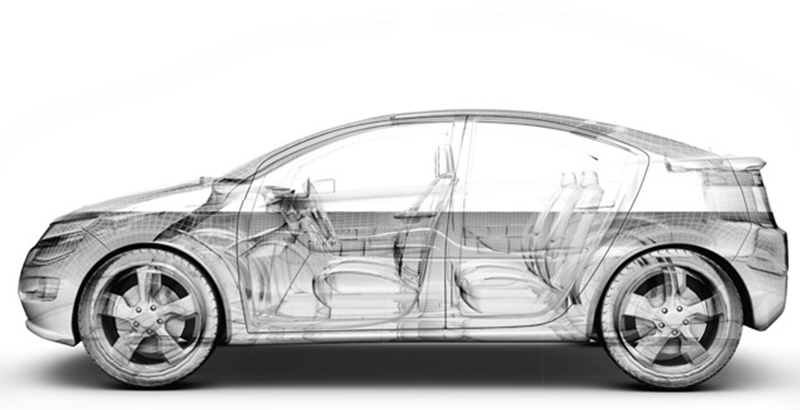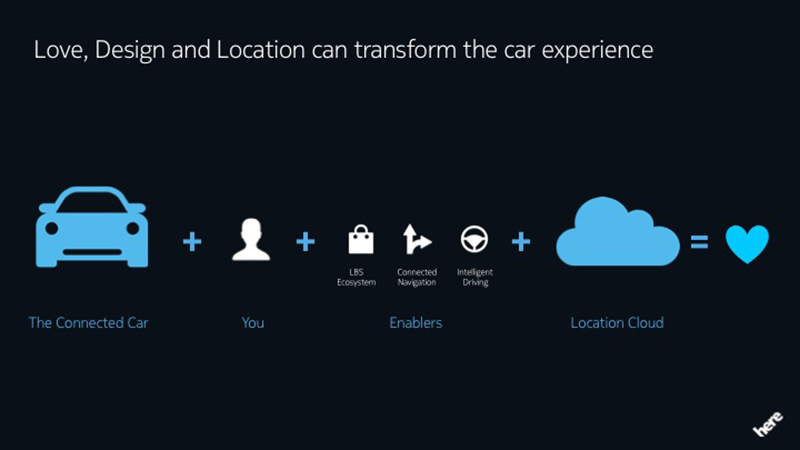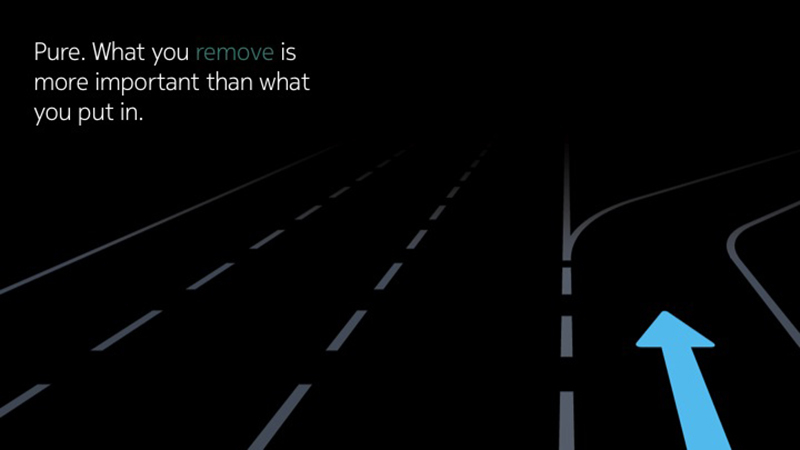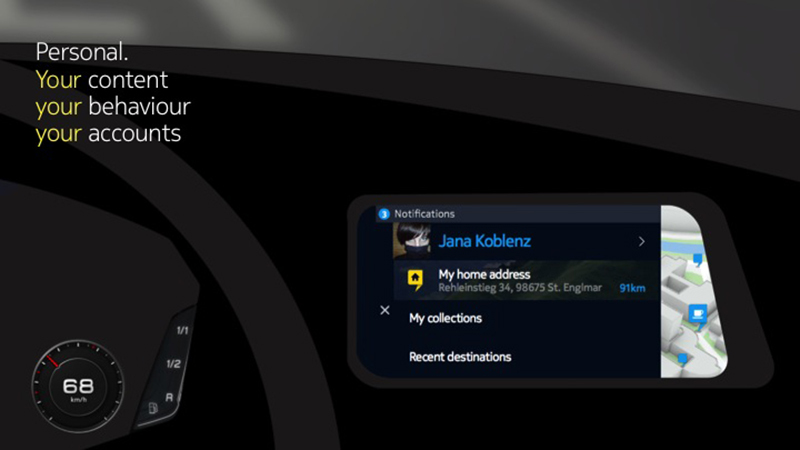Love, design and geolocation
Good Friday, Habr.
Not so long ago we wrote about how cars will change in the future. However, the inspiring performance of the design guru of HERE Peter Skillman at the famous SXSW festival made us return to the subject of the cars of the future.

Today we will not go into technical details, but try to talk about the concept of the car of the future from HERE. We want to talk about "connected" driving.
“ Now it seems that“ connected ”driving will simply transfer the user experience that we get when working with smartphones, tablets and other gadgets in the field of cars. Actually, this is a fundamental rethinking of the entire automotive industry and road infrastructure ”- from the speech of Peter Skillman at SXSW.
')

While we and some other companies are achieving some success , the sphere of “connected” car management is still in its infancy. Today, out of over a billion cars in the world, only 23 million have access to the Internet. By 2020, according to our expectations, this figure will increase to 152 million.
But cars connected to a single network in the near future are not only new interactive and entertaining features. By becoming part of the Internet of Things , they can do much more than we can right now. For example, move independently in space.
In the meantime, it is more likely that people will continue to install their tablets in car mounts or use smartphones while driving. And all because the vast majority of cars are optimized for driving, but not optimized to obtain all the necessary information.
It would seem that there could be dangerous? However, statistics says otherwise.
The company Strategy Analytics conducted a study on US traffic statistics and found that text messaging at the wheel increases the risk of an accident by 23 times. Even such a familiar action as viewing cards on a phone while driving represents a threat, increasing the risk of an accident by a factor of seven.

That is why we tried and try to rethink the principle of interaction between the driver and the services of a car connected to the network, making it as useful and safe as possible. For ourselves, we have broken it into three components: love , design and geolocation .
Do not deny people love their smartphones. They love so much that they can not tear themselves away from them for a second. About 80% of teenagers in America sleep with their smartphones as if with a favorite toy leaving their mobile devices at night in bed or near it.

But have you seen people (except for fans of car tuning and car audio, of course) who are in love with the interface of their car? Peter Skillman argues that by connecting cars to the network, automakers can hope that a spark will finally erupt between car owners and their “iron horses”.

And if the car will remain just a means of transportation, people will not stop using their phones even when they are driving. Lack of love for car systems and interfaces leads to dangerous roads and counteracts the development of automated driving.
To create all the conditions for the appearance of a spark between the driver and the car, we must reconsider the design of the embedded systems of the car. They must become a reliable friend and partner of a person you can trust, who helps you, who knows you and your habits.
Experience in the design of mobile devices has allowed Peter to endure four principles that are important for good design. First, interaction with any interface, ecosystem or device must be personalized. People want their favorite content and information to be always with them. Secondly, it should be as familiar as possible, that is, as simple, clear and convenient as possible.

Third, the focus on the daily details, i.e. the desire to help a person to solve any problems that he faces every day. Finally fourth, the emotionality of the product. Peter believes that the strong emotions that a product gives are much better than its neutrality, especially when it comes to the design of a system that people will use every day.
“ Geolocation and geolocation services in combination with connecting a car to a common network and an advanced sensor system should completely reverse the perception of a car, ” says Peter. This third component can be the basis for the system as a whole.
The cars of the future will be part of your ecosystem of connected devices. You can plan a trip or just see the address of the house, and when you get into your car, all the information will be on board.
However, the key factor here will be not an understanding of how to get to one or another destination, but an understanding of you and your desires.

Geographic systems with highly accurate and constantly updated maps can really help “peep” around corners, that is, create forecasts and adapt to circumstances. Such systems can also analyze driver's behavioral responses and build specific patterns of actions, helping the car to better adapt to the person.
Add to this the wire control and intelligent sensor system and you get a completely autonomous car. Vehicles that can instantly react to changes in the traffic situation both 10 cm in front of the bumper and tens of kilometers away.
Just think, now the car (maybe your car) can “see” pedestrians, cyclists, motorcyclists, recognize road markings and signs and prevent accidents. Already, the car can be taught to determine its location in space much more accurately than the navigator does, thanks to a combination of cameras, a recognition system and detailed maps from HERE. Therefore, we look to the future with undisguised optimism.
We believe that ultimately the combination of love, design and geolocation will completely change the approach to driving. From an understanding of the behavioral reactions and needs of the driver today to fully autonomous driving in the future, this combination will help make the car more humane.
Not so long ago we wrote about how cars will change in the future. However, the inspiring performance of the design guru of HERE Peter Skillman at the famous SXSW festival made us return to the subject of the cars of the future.

Today we will not go into technical details, but try to talk about the concept of the car of the future from HERE. We want to talk about "connected" driving.
“ Now it seems that“ connected ”driving will simply transfer the user experience that we get when working with smartphones, tablets and other gadgets in the field of cars. Actually, this is a fundamental rethinking of the entire automotive industry and road infrastructure ”- from the speech of Peter Skillman at SXSW.
')

While we and some other companies are achieving some success , the sphere of “connected” car management is still in its infancy. Today, out of over a billion cars in the world, only 23 million have access to the Internet. By 2020, according to our expectations, this figure will increase to 152 million.
But cars connected to a single network in the near future are not only new interactive and entertaining features. By becoming part of the Internet of Things , they can do much more than we can right now. For example, move independently in space.
Optimization of driving
In the meantime, it is more likely that people will continue to install their tablets in car mounts or use smartphones while driving. And all because the vast majority of cars are optimized for driving, but not optimized to obtain all the necessary information.
It would seem that there could be dangerous? However, statistics says otherwise.
The company Strategy Analytics conducted a study on US traffic statistics and found that text messaging at the wheel increases the risk of an accident by 23 times. Even such a familiar action as viewing cards on a phone while driving represents a threat, increasing the risk of an accident by a factor of seven.

That is why we tried and try to rethink the principle of interaction between the driver and the services of a car connected to the network, making it as useful and safe as possible. For ourselves, we have broken it into three components: love , design and geolocation .
All you need is love
Do not deny people love their smartphones. They love so much that they can not tear themselves away from them for a second. About 80% of teenagers in America sleep with their smartphones as if with a favorite toy leaving their mobile devices at night in bed or near it.

But have you seen people (except for fans of car tuning and car audio, of course) who are in love with the interface of their car? Peter Skillman argues that by connecting cars to the network, automakers can hope that a spark will finally erupt between car owners and their “iron horses”.

And if the car will remain just a means of transportation, people will not stop using their phones even when they are driving. Lack of love for car systems and interfaces leads to dangerous roads and counteracts the development of automated driving.
Design to help
To create all the conditions for the appearance of a spark between the driver and the car, we must reconsider the design of the embedded systems of the car. They must become a reliable friend and partner of a person you can trust, who helps you, who knows you and your habits.
Experience in the design of mobile devices has allowed Peter to endure four principles that are important for good design. First, interaction with any interface, ecosystem or device must be personalized. People want their favorite content and information to be always with them. Secondly, it should be as familiar as possible, that is, as simple, clear and convenient as possible.

Third, the focus on the daily details, i.e. the desire to help a person to solve any problems that he faces every day. Finally fourth, the emotionality of the product. Peter believes that the strong emotions that a product gives are much better than its neutrality, especially when it comes to the design of a system that people will use every day.
Geolocation, as the "three whales" of the entire system
“ Geolocation and geolocation services in combination with connecting a car to a common network and an advanced sensor system should completely reverse the perception of a car, ” says Peter. This third component can be the basis for the system as a whole.
The cars of the future will be part of your ecosystem of connected devices. You can plan a trip or just see the address of the house, and when you get into your car, all the information will be on board.
However, the key factor here will be not an understanding of how to get to one or another destination, but an understanding of you and your desires.

Geographic systems with highly accurate and constantly updated maps can really help “peep” around corners, that is, create forecasts and adapt to circumstances. Such systems can also analyze driver's behavioral responses and build specific patterns of actions, helping the car to better adapt to the person.
Add to this the wire control and intelligent sensor system and you get a completely autonomous car. Vehicles that can instantly react to changes in the traffic situation both 10 cm in front of the bumper and tens of kilometers away.
Just think, now the car (maybe your car) can “see” pedestrians, cyclists, motorcyclists, recognize road markings and signs and prevent accidents. Already, the car can be taught to determine its location in space much more accurately than the navigator does, thanks to a combination of cameras, a recognition system and detailed maps from HERE. Therefore, we look to the future with undisguised optimism.
We believe that ultimately the combination of love, design and geolocation will completely change the approach to driving. From an understanding of the behavioral reactions and needs of the driver today to fully autonomous driving in the future, this combination will help make the car more humane.
Source: https://habr.com/ru/post/217473/
All Articles